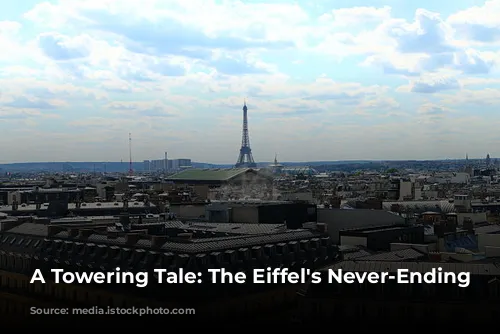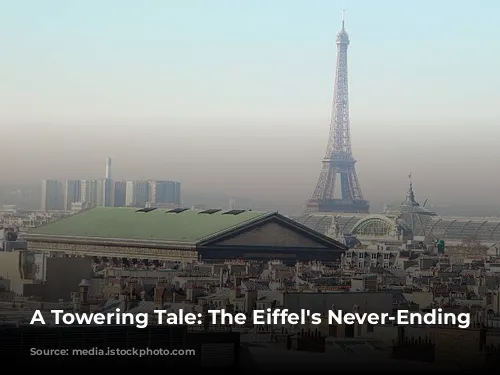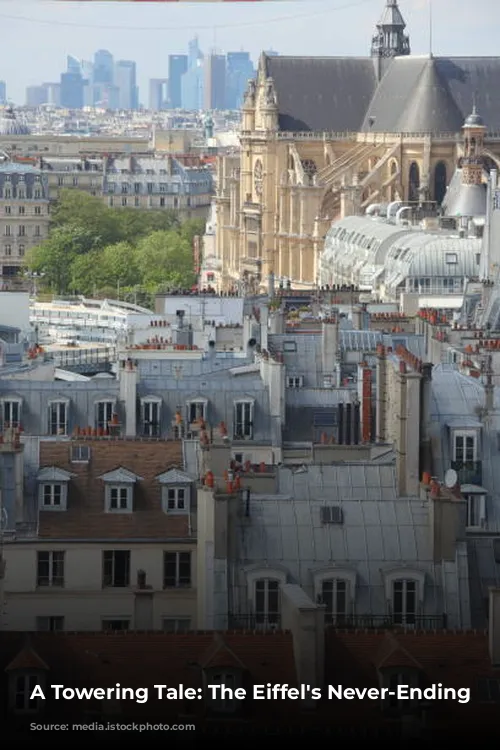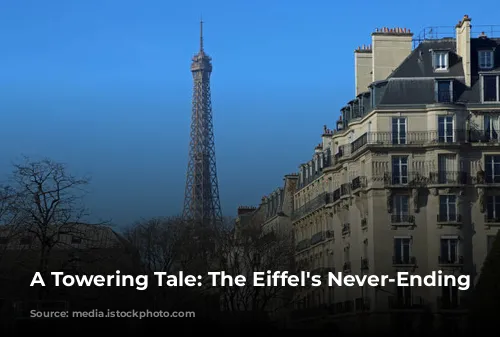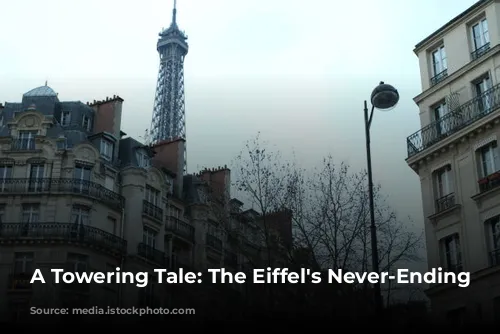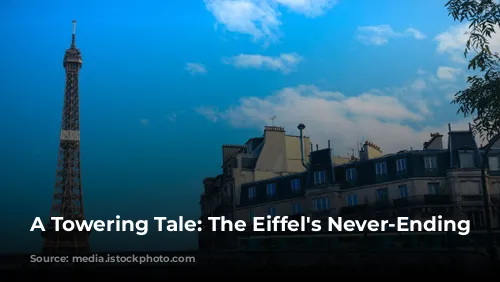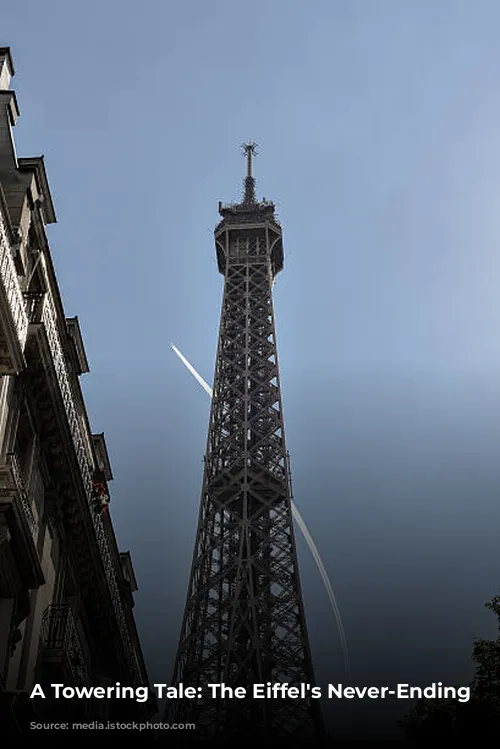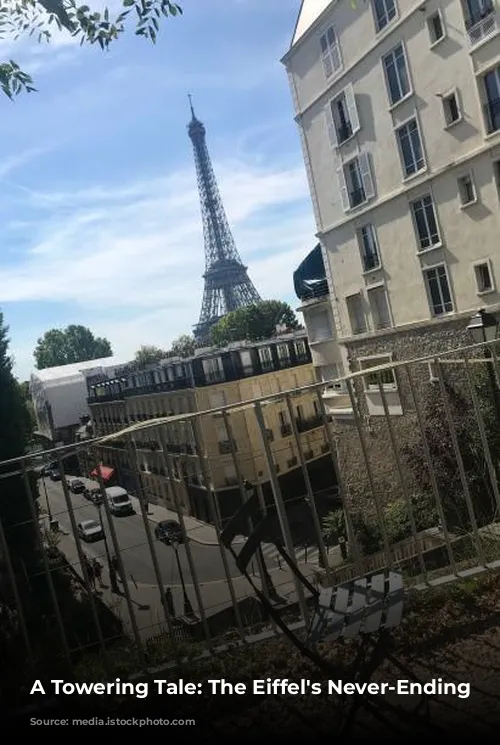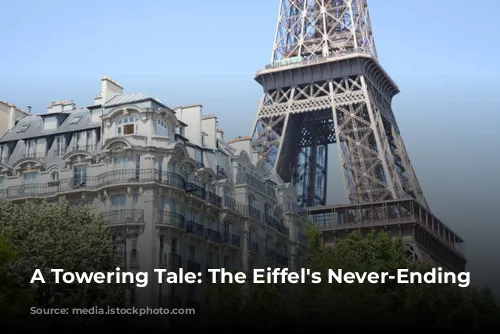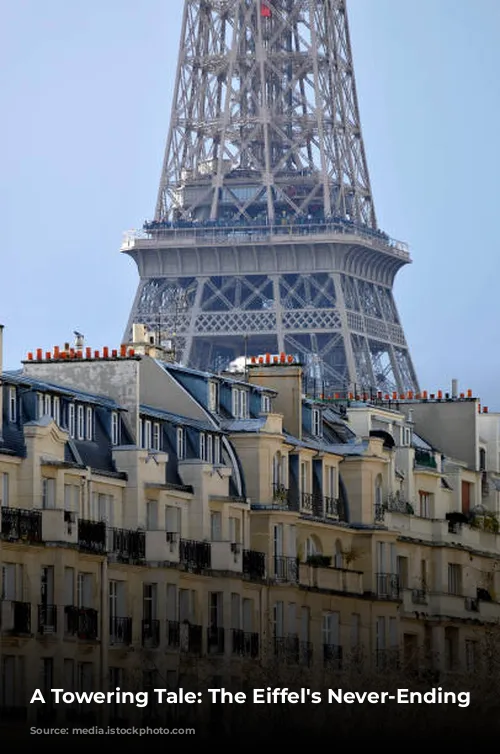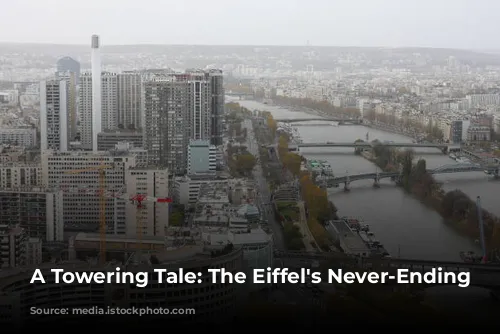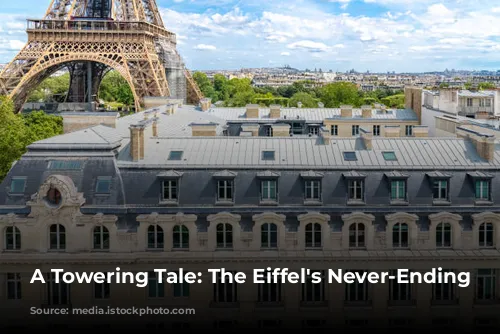The Eiffel Tower, a Parisian icon, stands tall, a testament to human ingenuity and architectural brilliance. But behind the grandeur lies a story of constant renovation, reflecting the tower’s enduring legacy.
The year is 1889. The Eiffel Tower, the world’s tallest structure, has just been completed. A grand celebration marks the end of construction, with guests ascending the 1,792 steps to the top. A member of parliament, blindfolded, navigates the ascent, symbolizing the tower’s remarkable achievement. As a flag unfurls and champagne flows, Gustave Eiffel, the tower’s creator, receives the Legion of Honor, a prestigious award recognizing his accomplishment.
The Eiffel Tower, once lauded for its audacity and engineering prowess, faced criticism from prominent figures like Maupassant and Zola, who condemned it as a monstrous and pointless structure.
A century and a quarter later, the Eiffel Tower stands as a symbol of Paris. However, its enduring popularity comes at a cost. The tower is undergoing extensive renovations, a testament to the challenges of preserving a historic landmark.
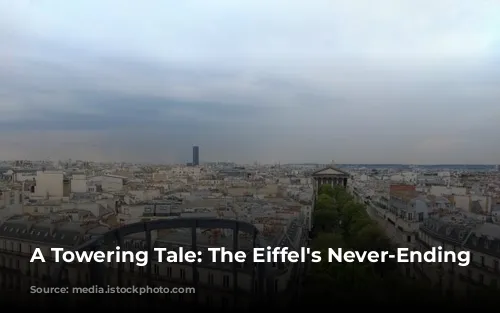
A Legacy of Repairs
The Eiffel Tower, once a symbol of progress, is now a monument to the challenges of maintaining a historic structure. The tower’s continued existence relies on a constant cycle of repairs, with renovations becoming an ongoing necessity.
While the tower’s 120th anniversary was celebrated with relative restraint, the reality is that the “old lady” is in need of constant care.
The tower currently faces a multitude of issues, from platform reconstruction to lift repairs.
The recent renovation of the west lift highlights the complexity and cost involved in maintaining the tower. What was initially anticipated to be a two-year project has stretched into six years, with costs tripling the initial estimate. The decision to preserve the original hydraulic drive system, a hallmark of Eiffel’s design, further complicated the task.
The challenges of these repairs, coupled with the tower’s temporary closure, have significantly impacted revenue. The recent closure of the north lift, due to repairs, resulted in a 12% drop in visitors, pushing the tower’s finances into the red. While visitor numbers rebounded the following year, with a 7% increase, the impact of these ongoing repairs remains a concern.
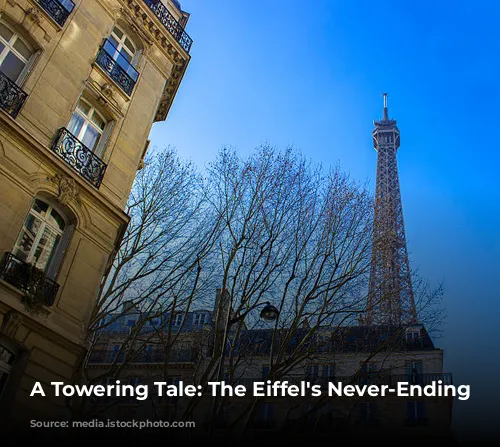
Balancing Legacy and Modernity
The Eiffel Tower, a monument to the past, faces the challenge of adapting to the present and future.
The ongoing renovations reflect the need to balance preserving the tower’s historical integrity with the demands of a modern tourist destination. The management has recognized the limitations of accommodating an ever-increasing number of visitors, with visitor numbers reaching a peak in 2003. The focus is now shifting toward enhancing the visitor experience, offering more space, time, and opportunities to explore the tower’s offerings.
The renovation of the first floor, encompassing the construction of glass walkways and a museum, aims to encourage visitors to linger longer, explore the tower’s various attractions, and engage in a more enriching experience.
This approach aligns with the success of the restaurant partnership with renowned chef Alain Ducasse. The partnership has resulted in a significant increase in sales, demonstrating the potential to cater to a more discerning and financially capable audience.
To further cater to a growing number of visitors, while maintaining a higher standard of experience, the possibility of adding additional floors has been explored. The concept of building an underground entrance hall, akin to the Louvre, has been proposed, raising questions about amenities, costs, and the feasibility of integrating the tower with the surrounding infrastructure.
Despite the challenges, the Eiffel Tower remains a symbol of resilience, adapting to the ever-changing demands of the 21st century.
Like Gustave Eiffel, who faced financial challenges and critical opposition, the tower’s current custodians grapple with balancing preservation and modernization.
The Eiffel Tower stands tall, a testament to both the ingenuity of its creator and the enduring legacy of a Parisian icon. Its story is a continuous process of evolution, adaptation, and renewal, ensuring its place as a symbol of Paris, both past and present.
